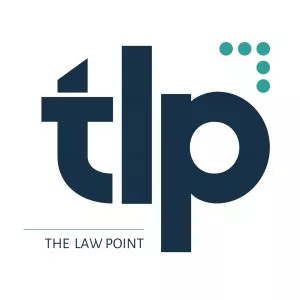The NCLT Mumbai bench, on 19.05.2021, passed an interim order directing lenders to table the offer made by Kapil Wadhwan, promoter of the Corporate Debtor (DHFL), for the full settlement of the mortgage lender's ?91,000 crore dues, including ?43,000 crore in the initial few years, for its "consideration, decision, voting". This order of the NCLT was challenged in the NCLAT and on 25.05.2021, it was stayed. The matter is now listed before the NCLT on 31.05.2021, and the appeal is listed before the NCLAT on 25.06.2021.
Brief facts
- The Applicant, Kapil Wadhwan, is a promoter of the Corporate Debtor, i.e., DHFL. The insolvency petition was admitted on 03.12.2019 with the initiation of CIRP with a Resolution Professional (Respondent No. 1) being appointed as the Administrator of DHFL.
- Despite repeated requests made by the Applicant to participate in the CoC meetings, Respondent No. 1 has refused to provide access to any of the Promoters, including the Applicant. Presently, the Applicant is in judicial custody for allegations of cheating and fraud. The Applicant is also an accused in the Yes Bank loan bribery case.
- Before the NCLT, the Applicant Promoter proposed a one-time settlement (OTS) offer. However, the same cannot be considered a a settlement agreement nor a Resolution Plan. The OTS presented by the Applicant Promoter envisages full payment to small creditors, including NCDs and fixed deposit holders, and its value is nearly 1.5 times the resolution plan value of the approved Resolution Applicant Piramal Group. In view thereof, the Applicant forwarded a Settlement Proposal ("1st Settlement Proposal), which would ensure repayment in full of the principal amount due to all creditors of DHFL. However, the same was rejected by the CoC. The 2nd Settlement Proposal put forward by the Applicant is yet to be considered, accepted or rejected by the CoC.
- This led the Applicant to file the present Interlocutory Application before the NCLT in Mumbai, seeking direction from the Tribunal that Respondent No. 3, through the agency of Respondent No. 1, be required to place before the CoC, the 2nd Settlement Proposal for consideration along with the Resolution Plans submitted by various Resolution Applicants.
NCLT Proceedings and Order
- The Respondents – CoC, Piramal Group, and RP, argued that the Tribunal has no power or jurisdiction to direct any Applicant, and in this case the RBI, to place any Settlement Proposal before the CoC for consideration. It was further argued that the Applicant, as one of the Promoters, was purportedly responsible for the present financial health of the Corporate Debtor and that no proposal ought to be entertained from such a Promoter. In support of this submission, the Respondents also relied on the ongoing criminal investigations into the Applicant's management of the affairs of the Corporate Debtor. Further, it was argued that the present proposal was defective insofar as it did not comply with the requirements of an application under Section 12A of the Insolvency and Bankruptcy Code (IBC) and Rule 30A of the Insolvency and Bankruptcy Board of India (Insolvency Resolution Process for Corporate Persons) Regulations, 2016.
- The Applicant argued that these objections are misconceived since the application filed under Section 60 of the IBC provides broad powers to the Tribunal to interfere. It was also contended that the Tribunal has the inherent power to make such order as may be necessary to meet the ends of justice or to prevent the abuse of the Tribunal process. The Applicant relied upon Sukhbeer Singh vs. Dinesh Chandra Agarwal, Shaji Purushothaman vs. Union Bank of India & Ors, and Vishal Vijay Kalantri vs. Dighi Port Ltd. & Anr.
- It was contended that in light of the above, the Resolution Professional or, as in the present case, the Administrator, is obliged to place before the CoC, a Settlement Proposal forwarded to him. It is also clear that if he fails in this duty, the Tribunal would be fully within its rights to issue a direction to the Applicant, the Resolution Professional. or the Administrator, as the case may be, to place the Settlement Proposal for consideration before the CoC.
- The NCLT made the following observations
- The Applicant has offered approx. Rs 91,158 crores which is more than Rs. 54,512 crores greater than the next highest bidder, who offered Rs. 37,250 crores. Since this settlement proposal is substantially higher, and more than 1.5 times the value of the next highest bidder, the same needs due consideration by the Administrator/CoC.
- The proposal is given by the Promoter of the Corporate Debtor, who has repaid approx. Rs 41,000/- crores of his liability between Sep 2018 and June 2019 without any fresh borrowing by infusing funds raised by selling equity and personal assets.
- If the proposal is considered and the terms and conditions are acceptable to the CoC members in their commercial wisdom, ultimately, it would benefit the Financial Creditors (Banks, Financial Institutions) and thousands of small investors.
- The money lent by the Banks to the corporate debtor is also public money. Therefore, the proposal needs due consideration, given the quantum of money offered in the 2nd Settlement Proposal.
- The same would be in the interest of justice and equity, and that of various stakeholders, and would also maximise the value of the assets of the corporate debtor. Such consideration would also be in the best interest of the special situation at hand, and would help avoid further litigations by the Applicant.
- Therefore, the NCLT directed the Administrator to place the 2nd Settlement Proposal of the Applicant, Mr. Kapil Wadhawan, before CoC for its consideration, decision, and voting and to inform the Tribunal of the outcome of the same within 10 days from the date of the order.
Challenge before NCLAT
- The CoC immediately challenged the above direction before the NCLAT.
- It was submitted that the Impugned Order is unique in that it allowed the original promoter, who was ineligible under Section 29A of IBC, to find an alternate route by sending settlement proposals which were not in accordance with the provisions under Section 12A of the IBC, so as to stall the CIRP which was initiated against DHFL.
- It was also contended that when the Resolution Process is initiated, there can only be three contingencies: (i) Resolution Plan is approved, (ii) Orders of Liquidation are passed or (iii) the CIRP is disposed of under Section 12A.
- The settlement proposals do not fall either under the category of Resolution Plan nor do they fall within the procedure under Section 12 A of the IBC, despite which the Impugned order was passed by the NCLT
- It was also indicated that the CoC could not consider a plan by the Applicant Promoter since the Promoter himself was responsible for the current financial plight of DHFL. The CoC has lost faith in the Applicant, and is therefore unwilling to consider the proposal. Issues with respect to the inflated valuations of the properties the Applicant envisaged selling were also contended.
Decision of NCLAT
- The NCLAT observed that the matter is at a stage where a Resolution Plan is pending before the NCLT for final approval despite the initiation of CIRP. It further held that there will be no end to the CIRP if Resolution Applicants or parties are permitted to intervene at belated stages claiming maximisation of assets. This observation aligns with previous judgments where the Tribunal has adjudicated on similar lines. There will be no end to proceedings if such reversals are allowed.
- , The Impugned Order has been passed without adjudicating on the Resolution Plan. Therefore, until the appeal is decided, the NCLAT directed that the Impugned Order be stayed, and directed the NCLT to decide the I.A. filed by the Administrator, i.e., Respondent No. 1, under Section 30 read with Section 31 of IBC at the earliest.
Conclusion
It is likely that the the resolution plan by the Piramal Group will receive final approval from the NCLT soon. With regard to the Appeal proceedings in which stay has been granted by the NCLAT, the original Applicant Promoter may not be successful at the end of the day. However they may phrase the one-time settlement, such a venture remains a means for the Promoter Applicant to buy back the entity under CIRP through a back door entry expressly prohibited under Section 29A of the Code. The option of withdrawal of the proceedings should have been considered at an earlier time. Even then, such withdrawal would have to be approved by a 90% majority of the CoC.
The content of this article is intended to provide a general guide to the subject matter. Specialist advice should be sought about your specific circumstances.



